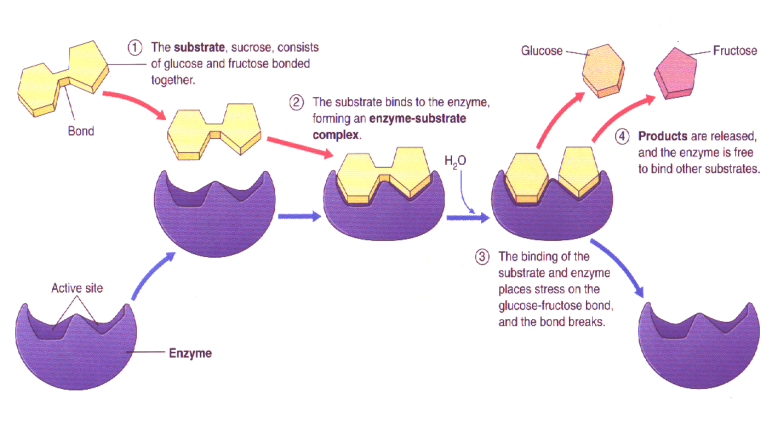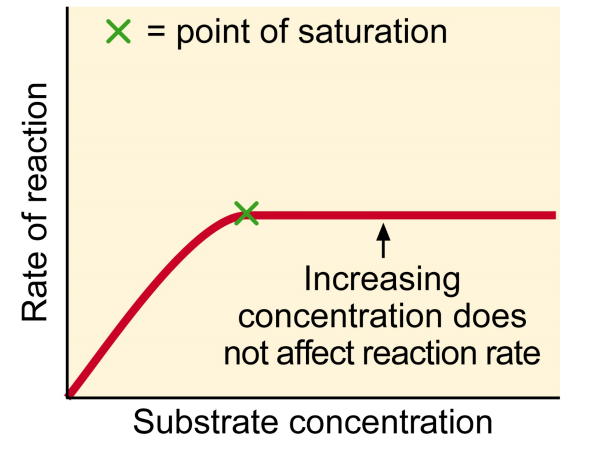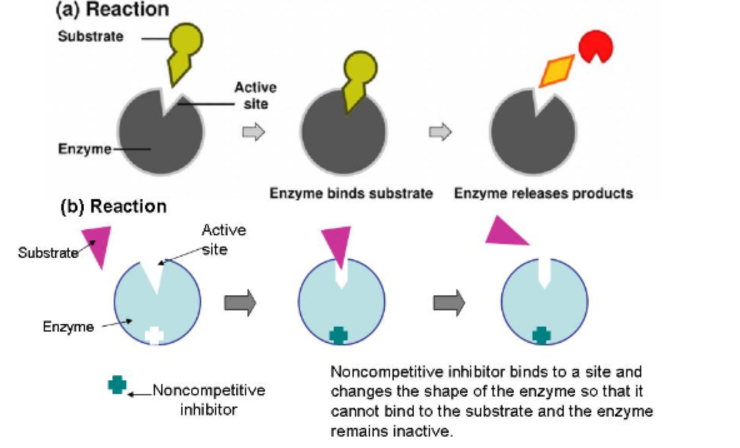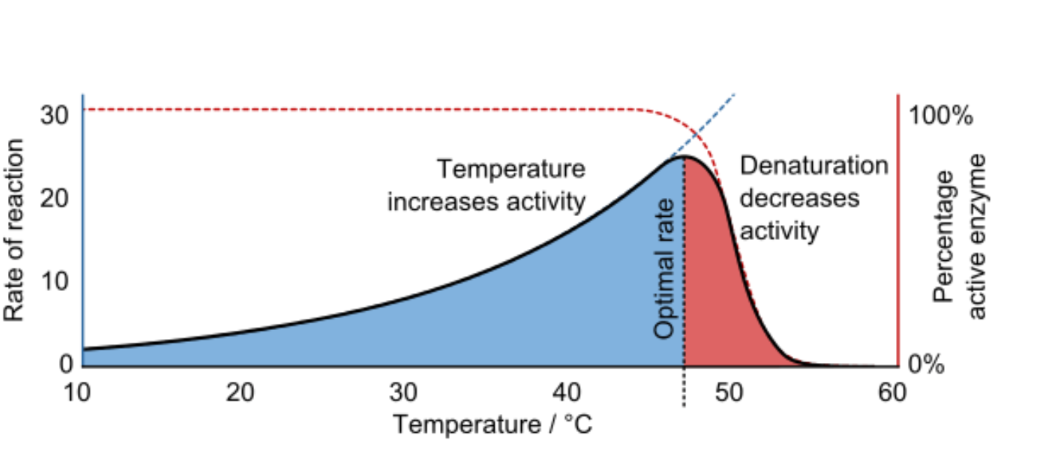Unit 1: Biochemistry - #7 Structure and Function of Enzymes (copy)
1/10
There's no tags or description
Looks like no tags are added yet.
Name | Mastery | Learn | Test | Matching | Spaced |
|---|
No study sessions yet.
11 Terms
What is an Enzyme?
Biological catalysts that increase the speed of biochemical reactions within cells.
Enzymes are proteins that are NOT consumed during reactions
They can catalyze the same reaction repeatedly
Each enzyme has a unique shape, which determines which reactions it catalyzes
Induced Fit Hypothesis
Initially the active site is not a direct fit for the substrate
Just prior to substrate binding, the enzyme modifies its shape to better accommodate the substrate
The enzyme binds to the substrate
Creates an enzyme-substrate complex
Enzyme converts substrate into product(s)

List the factors that affect Enzyme Activity
Enzyme and Substrate Concentration
Enzyme Inhibitors
pH and Temperature
Enzyme and Substrate Concentration
If excess substrate, rate of reaction becomes proportional to enzyme concentration
If enzyme at a constant concentration, increasing substrate concentration will only increase reaction rate to a point called saturation level
At this point, all enzyme molecules saturated with substrate

What are Enzyme Inhibitors? List the two types of inhibition
Molecules that bind to an enzyme and lowers the rate at which it catalyzes a reaction
Competitive and Non-Competitive
Competitive Inhibitors
Compete with the substrate for the enzyme’s active site
Shape/Mimics substrate
Enter the enzyme’s active site and prevent the normal substrate from binding

Non-Competitive Inhibitors
Does not compete for active site
Attaches to enzyme on a site other than the active site (allosteric site)
Causes the enzyme to change shape, so that active site looses affinity for its substrate

KEEP GOING!!
Feedback Inhibition
A product of a reaction acts as a regulator of the reaction
Used by cells to control metabolic pathways involving series of reactions
If the product accumulates in excess, its effect as an inhibitor automatically slows or stops the enzymatic reaction that produces it.
If the product is scarce, the inhibition is reduced, and the rate of the reaction increases.
Product formed later in sequence allosterically inhibits the enzyme catalyzing the first reaction of the pathway
Each reaction catalyzed by specific enzyme

Temperature
As temperature increases beyond a critical point, enzymes denature
Every enzyme has an optimal temperature at which it works best (humans -37 C)

pH
Enzymes have optimal pH range
Eg. Pepsin works best at pH of 2 in stomach, inactive in small Intestine pH of 8
